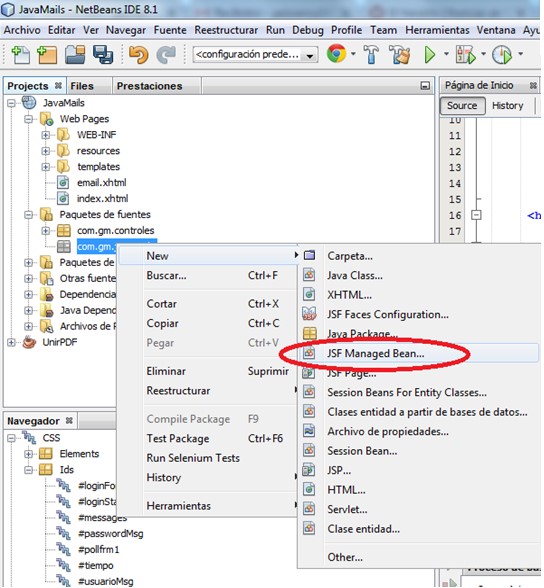This technote explains how you can create a PDF report using Jasper Reports and display it on a JSF Portlet with IBM® Rational® Application Developer (RAD) v7.x. Book Name: The Definitive Guide to JSF in Java EE 8 Author: Arjan Tijms, Bauke Scholtz ISBN-10: Year: 2018 Pages: 512 Language: English File size: 7.1 MB File format: PDF. JSF i About the Tutorial Java Server Faces (JSF) is a Java-based web application framework intended to simplify development integration of web-based user interfaces. JavaServer Faces is a standardized display technology, which was formalized in a specification through the Java Community Process.


Convertir Archivo Jsf A Pdf Online

Convertidor De Jsf A Pdf
Home
JSF in a nutshellJSF has two main functions. The first is to generate a user interface, typically an HTML response that is served to a browser and viewed as a web page. This user interface is represented on the server by a component tree. There is a 1-to-1 mapping between elements in the component tree and elements in the user interface. The actual user interface is generated when the component tree is encoded (or rendered). This separation between component tree and user interface allows JSF to support different markup languages (HTML vs XUL) or alternative browser environments (desktop vs smartphones).The second function of JSF is to respond to user-generated events in the page by invoking server-side listeners, followed by the generation of another user interface (e.g., web page) or an update to the user interface already displayed (possibly through Ajax). In this regard, JSF is said to be an event-driven web framework. It's important to mention that JSF is part of the standard Java EE platform, which means it's built-in to any compliant Java EE application server, such as Oracle's WebLogic, GlassFish Open Source Edition, or JBoss AS. But it can also be used as a standalone library in servlet containers such as Tomcat and Jetty. Of course, there's much more to JSF than what's described here. You can read more about JSF in the specification document (choose 'for evaluation') or the myriad of resources that have been published about it, ranging from books, to articles, to blog entries. The purpose of this page is to make you more familiar with the JSF framework itself: how it is developed, where it lives, and what it has to do with a specification. Basically, what sets it apart from other web frameworks. Java and JavaServer Faces are trademarks or registered trademarks of Oracle and/or its affiliates. http://www.javaserverfaces.org is maintained and operated by members of the JSR-314 (JSF 2.0) Expert Group and dedicated community contributors.Got a suggestion to make javaserverfaces.org better? Is there a page we forgot? Please post your suggestion in the community forums. |


Comments are closed.